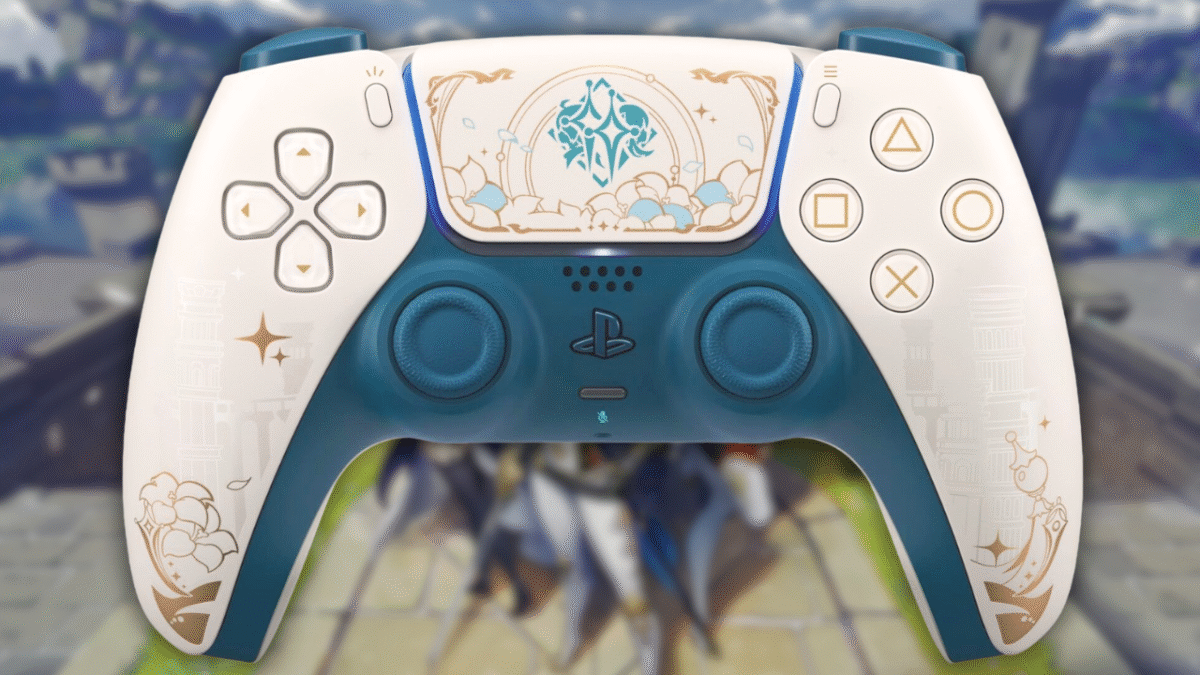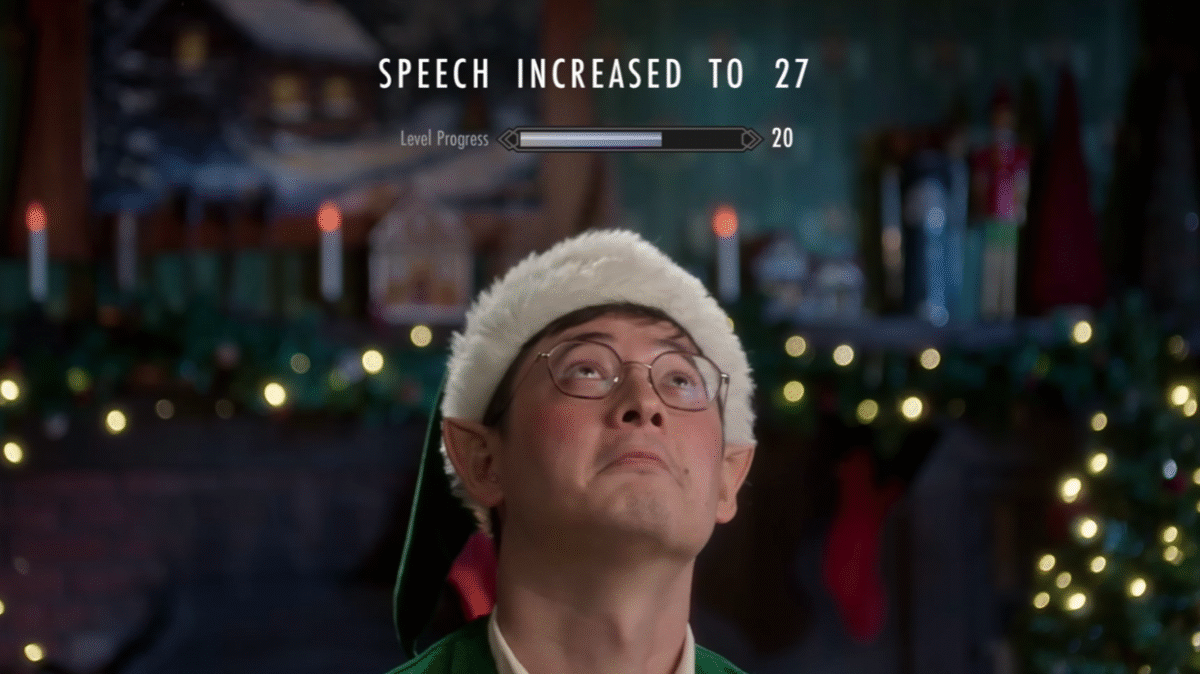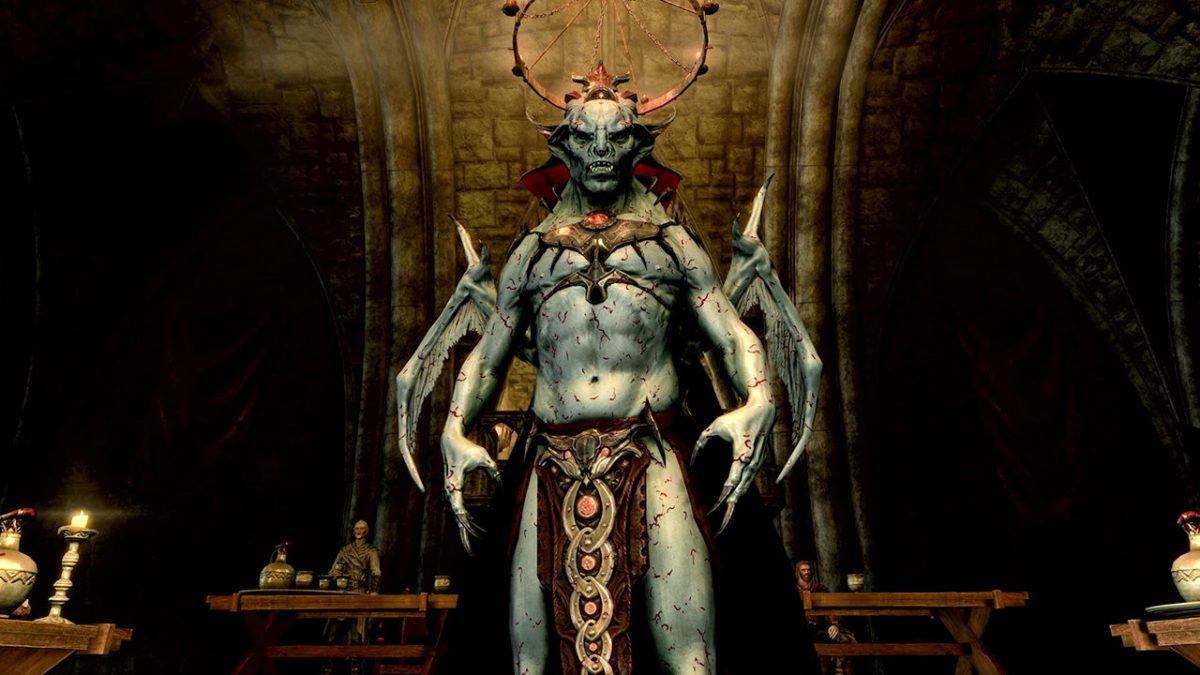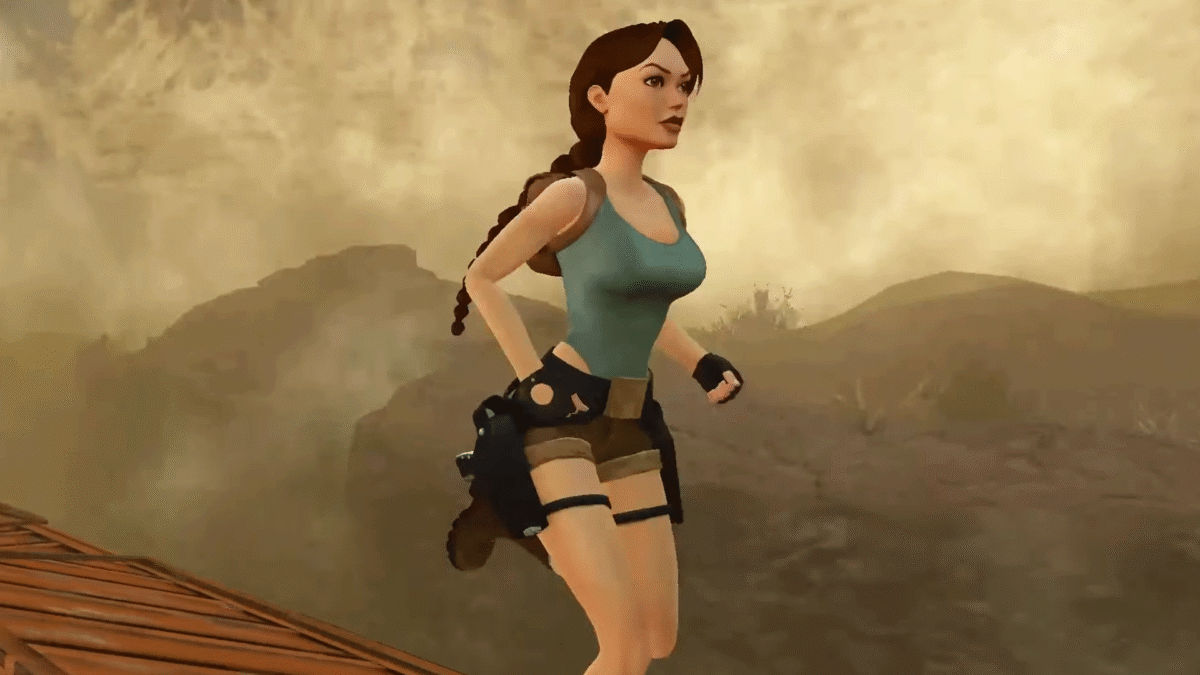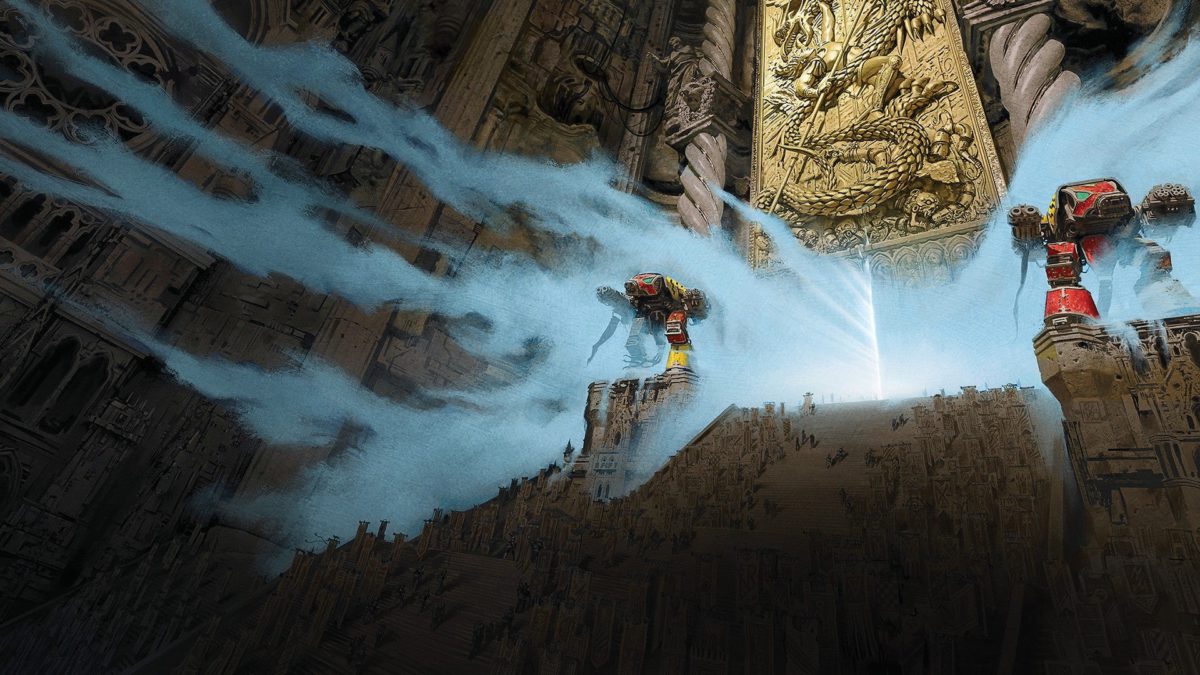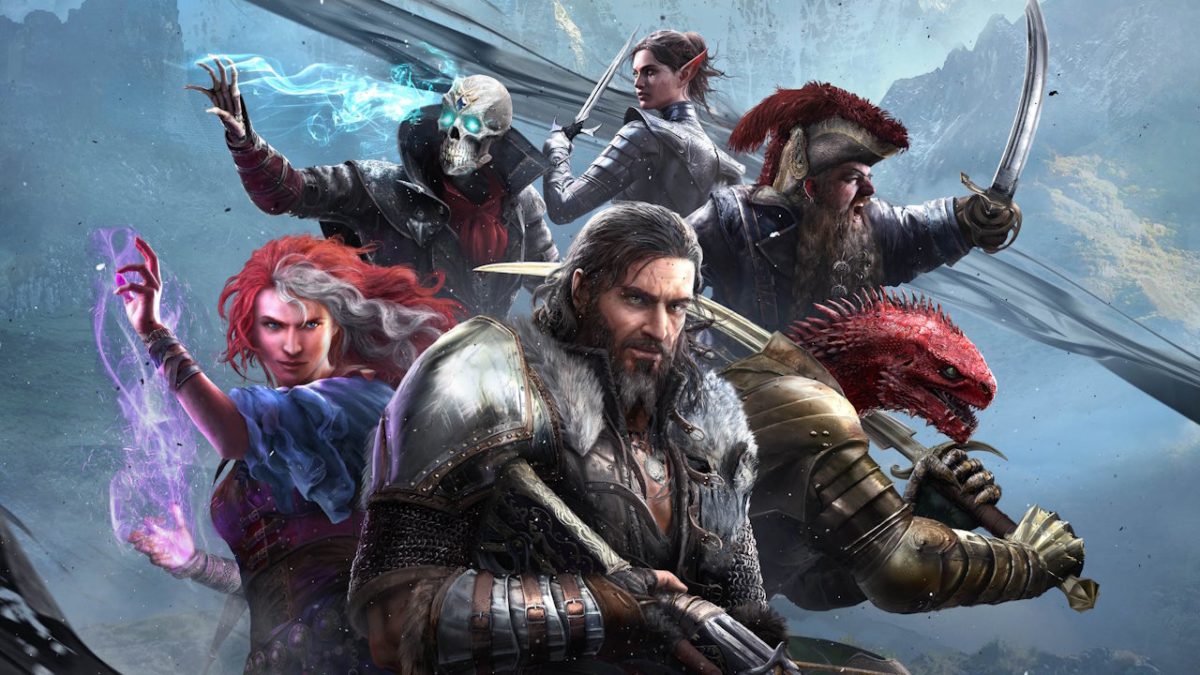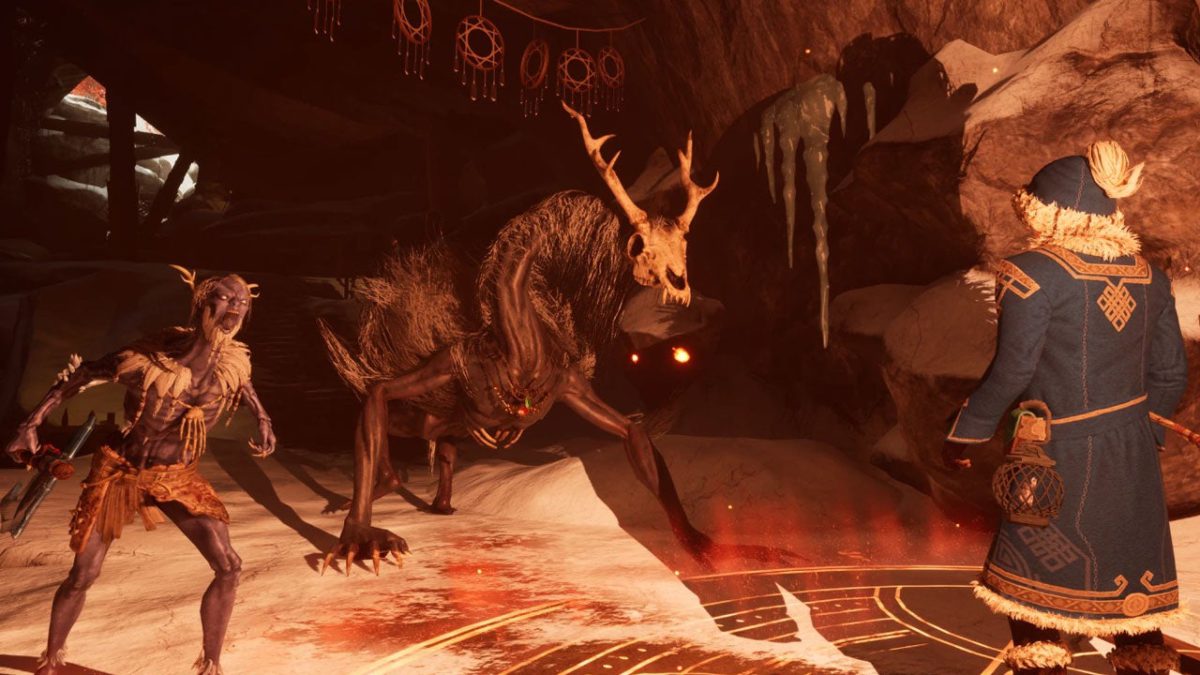
As part of our ongoing month-long exclusive coverage of High on Life 2, the upcoming first-person shooter, I sat down with Squanch Games Chief Creative Officer Mikey Spano and Chief Design Officer Erich Meyr to discuss the art of making a comedy game sequel. Is it any easier to pull off than the comedy movie sequel, which doesn’t have a great overall track record. All that and more are covered in the interview you can watch in the video above or read in the transcript below.
High on Life 2 will be released on February 13, 2026 for PC, PS5, and Xbox Series X|S – including launching on day one into Xbox Game Pass.
IGN: I’ve got a hundred questions here, not literally 100, but there’s a lot I want to ask you guys. And I thought I’d kind of start here. And that is, I don’t know if you’d agree, but in my opinion, comedy sequels, at least in the movie side of entertainment, don’t have an awesome track record, so how do you approach doing a comedy game sequel to avoid some of the same pitfalls that comedy movie sequels seem to fall into?
Eric Meyer: I feel like a lot of movie sequels in general aren’t better than the first, right? But game sequels are usually like a refined version of the first game. And yeah, we definitely took a lot of great ideas that we couldn’t do in the first game and put them in this one, so hopefully we’ll overcome that.
Mikey Spano: Yeah, with the first one, I don’t think we really knew what it was until it was in the hands of reviewers and we were like, “Oh, this actually turned out pretty cool.” We were just so heads down on it, it was a new IP for us. So I think for this one, we had a good place to start, so we’re really hoping that it’s a plus up of the original. I mean, there’s definitely more jank in the original than this one, which is a lot of fun and keeps things funny, but I think we’ll still have plenty of just fun, weird, unexpected stuff, so I’m hoping people like it just as much as the first, if not more.
IGN: Mikey, can you speak a little more to that? Because I’ve never made a game, I don’t have the talent or skills for that, but I’ve talked to a million developers, reviewed, covered a million games. And I’ve heard that a lot where games are such a unique art form where often, they don’t really come together until the very end and then suddenly you’ve got a game. So can you kind of talk me through not the development of the first game, but more kind of the very end that you’re referencing there when it does come together, and then when it comes out and you start getting feedback from players and from reviewers? Did anything hit differently with players in the public than you thought it would, or did things surprise you versus what you’d intended or planned?
Mikey Spano: Yeah, definitely. I mean, there’s a lot of angles we can look at for High On Life in particular. We’re pretty open with our team about letting them put in stuff that they’re interested in. And then usually they’ll just reach out and say, “Hey, is this cool or does this work?” But towards the end, we have people we trust a lot that just can go in and do stuff if they want. So from a perspective of even just the dev that was working on directing the game, we saw stuff, or at least I can say I saw stuff that I didn’t even know was in the game, and I am in there.
I saw things in some streams where I’m like, “Where did that even come from? Oh my God, that’s awesome.” That kind of stuff was really surprising and fun and that was intentional on our part. And then there’s just a bunch of stuff that kind of breaks in funny ways or things that somebody approaches it a different way than I would’ve approached it or someone here would’ve approached it. And so you get this sort of emergent comedy that’s based on the players’ actions and not necessarily what we intended the players’ actions to be.
Eric Meyer: Yeah, in the first game, there was a bug where people were getting stuck in Applebee’s and that became an internet joke for a while. And we’re like, “Sure, we’ll own it. Yeah, you get stuck in Applebee’s forever.”
Mikey Spano: Yeah, the other thing we struggle with is, we call it dev eyes, where it’s like you’ve just been looking at the game for so long. All the jokes you’ve heard a thousand times, they might’ve been funny the first time. And so you never really know at the end, what’s going to land with people because for you, you’re so numb to this stuff. So you sort of give it to a friend to play or we’ll get some people in and we’ll watch them play and evaluate, “Oh, that’s surprising, this was their favorite part.” And it’s something we’ve seen so much, we weren’t even thinking about it.
Eric Meyer: Yeah. That happened with us with our demo, where we put in so many good jokes throughout it. And then the thing that resonated the most was taking Sheath and turning him into a gun and that whole bit, the whole joke of that bit. And I don’t think any of us expected that to be the biggest hit. We were like, “Oh no, it’s going to be this part or this part.” But I mean, the internet doesn’t lie, right? That was the part people watched the most.
IGN: What ultimately then, were the lessons that you took out of the first game when you’re talking about kind of more hitting the ground running here with High On Life 2? What are those lessons that you took from the first one that are helping this one?
Eric Meyer: I mean, we definitely knew the formula we wanted to do. We knew how a lot of jokes worked. We knew how we did an interactive gameplay with them, and we could take that and be like, “Let’s do that kind of thing here, that kind of thing here,” or, “Let’s one up that one.” So it gave us a really good platform to stand on as far as figuring out what all of our different moments would be, what our jokes would be, so that was really great. That helped us tremendously at the beginning.
And then also just, there was a whole can of worms around how do you handle having all these different guns and each one can be out and each one can have its own little comedy layer to a mission? And so we learned a lot of lessons from that and we’re able to just like every mission now, we’re like, “Yeah, we can focus on this gun here and we can do this here.” It really helped us understand how to just build our game.
Mikey Spano: Yeah, for sure. We had the foundation. I mean, in the first game, we kind of take for granted that we were figuring out the gameplay, too. It’s a first person shooter, but outside of knowing that it was a first person shooter, we had to figure out everything from the ground up, which is a lot harder than you would think. Starting with that foundation helped us game play-wise to really focus on the things that were working, try not to change those too much. And then the things that weren’t working, building on them, and then also just bringing in some new stuff that we wouldn’t have been able to bring into the first game because we were just figuring out the basics.
And that goes across comedy, too. I mean, we are always trying jokes that don’t land. We’re trying ways to tell the jokes that don’t always work. And we end up with the best, but a lot of that stuff didn’t work for one reason or another. And so we have that stuff left over for the next game that we can try again. And we’re never really starting from zero per se, with this sequel. I mean, conceptually, there’s a lot of stuff that’s from zero, but in terms of our systems and everything, we had a good starting point.
IGN: A lot of developers I know these days just pull a ton of telemetry from players when they’re playing. So when it’s out there in the wild, kind of building on what you guys are saying, did any particular telemetry jump out at you guys, like people watching a surprisingly high amount of the in-game TV or barely looking at it at all, then maybe you take that and you either double down on something or scale back on something for the sequel?
Eric Meyer: Yeah. I mean, this is a little bit anecdotal from just hearing it everywhere, not necessarily a more qualitative thing, but just the many people who love Tammy and the T-Rex from that. You especially go through Steam reviews or whatever and yeah, there’s certain things like that, that we did not expect to hit so strongly. And then yeah, I mean, just like any other game too, you kind of see where people fell off, like how many people played at the beginning. And for us, we were on Game Pass, so a lot of people tried the game, which was great. And we could see how far… Like any game, you have the curve of a lot of people get through the beginning and then you don’t have as many people who actually finish it, but even people who didn’t finish it still really enjoyed it. So it’s cool to see that.
Mikey Spano: Yeah, we kind of had a unique situation where we had so many players. We were not anticipating that, but I think we’re over 20 million players at this point on the game, which is insane. So pretty much every little area of the game was poked at in a way we didn’t expect and it was really fun to watch that happen. I mean, you’re stressed about, “Oh man, somebody found this bug,” or, “Somebody exploited this thing,” and you get stressed about it. But then you realize most people are out there just kind of having fun and laughing at it. And with 20 million people, there was quite a few variations of things people were hyper focused on or laughing about. I mean, some of my favorite stuff that came out of it is just the weird Hentai fan art of the guns, there’s just so much. We hit every facet of weird internet culture and I love it, I couldn’t be happier about it.
IGN: That’s awesome. I mean, on that note, I wanted to ask you guys about Game Pass because I think Game Pass has been in the news lately for at least maybe not players’ favorite reasons recently, but I think more broadly than that, and I even would say this from where I sit as somebody that covers Xbox and talks about Xbox on an Xbox podcast all the time, there’s a lot of confusion, I think, from players about the business side of how Game Pass works. Now, I’m not asking you guys to share the terms of your deal with Microsoft or anything like that.
But clearly the first game, as you’re talking about, Mikey, that was a huge success for you guys on the back of launching straight into Game Pass. So can you talk about what worked for you with that deal, what you got out of it, basically? Obviously, you mentioned 20 million players, but do you see Steam sales spike when it hits Game Pass or stuff like that? I don’t know if, again, without maybe opening up the company’s books or anything, which, I know you’re not going to do that, but can you kind of speak to the fallout, if you will, of being on Game Pass?
Mikey Spano: Yeah. I mean, I look at Game Pass as a way to get people who are curious about your game. It’s almost like a way to just demo games that are on Game Pass, where it reminds me of those old PlayStation Underground CDs you used to get in the mail. Game Pass to me is sort of that feeling. There’s so many games that I’m interested in, but it’s unlikely I’m going to buy every single one for a variety of reasons. So with Game Pass, it’s like I’ll check this game out. And typically I fall off. I have really bad ADD, so I’ll fall off after an hour or something. And I think with High On Life, we had a lot of people that love Rick and Morty or hated Rick and Morty, but either way they knew about the game for that reason and maybe they wanted to hate play it. And then they ended up actually liking it. And then you kind of build this buzz around, “Have you guys heard of this crazy game,” where somebody might not have taken the plunge and bought the full price game, so the online sentiment wouldn’t have been as big. It wouldn’t have been such a big conversation around the game.
I think that really helped us with marketing the game, especially as a new studio with a new IP and everything. Without Game Pass, we would’ve had very little visibility, so it was beneficial in that way. And I think there’s some ways now that Game Pass has evolved a little where they’re allowing people to come out simultaneously day one on PlayStation or come out on Steam. And that kind of stuff, we have no idea how that’s going to work out, but based on what happened with the first game, I’m thinking it’s going to be really big for us because we still get that conversation around the game from people playing Game Pass. But then people on PlayStation, they don’t have to wait a year and then kind of forget about it and then restart the conversation. I think Game Pass is going to be even better for us this time than it was for the first game.
Eric Meyer: Yeah, it’s hard. I mean, these days, there’s a lot of good games coming out all the time. I’m constantly shocked when I’m like, “Wait, what is this game that looks like everything I want from the game, but it came out two years ago?” And I follow news and everything, so getting a good amount of attention to your game is critical.
IGN: A big new feature of High On Life 2 is skateboarding. I’m a big first person shooter fan and I’ve played a million of them over the years, and I’m trying to think if I’ve ever played a first person shooter that has skateboarding in it. Where does the idea come from for that? How does that kind of come up and then hone in as a key new feature of the sequel?
Mikey Spano: Yeah, this is a really interesting one because this is something both Eric and I really wanted on the first game. We had a concept artist, Sean McNally, who, amazing concept artist. You can use his name in here if you want. He’s great, love the guy, very talented. We were kind of coming up, “What are some other things you can do with aliens and alien life forms?” And he had drawn this sort of pill bug that unfolded into a skateboard and we were like, “Ah, God, we got to get this-“
Eric Meyer: Yeah, it was so cool. We were like, “We could just throw this in as a thing you could temporarily have for a moment in a level or something.”
Mikey Spano: Yeah. And then in my head, it was like the boot in Mario 3 or something, where an enemy and you use it temporarily. And so when we started High On Life 2, we started kicking the conversation around again, “What if we had a power up that let you kind of skateboard?” And so it was meant to just be a little thing. And we started playing with it and the fun was there, but there was so much complexity that I got to the point as like… I grew up skateboarding, I love skateboarding, but I got to the point where I was like, “It’s just too risky, we can’t do it.” And then Eric was like, “I’m not letting go of this.”
Eric Meyer: In the first game when we were figuring out a traversal kit, at one point we had this sort of omnidirectional boost thing and it was kind of cool. It helped the momentum of the game, but it just didn’t have anything grounding it. We converted it into sort of a power slide, which was really fun the first game. It’s my favorite thing to do in that game. And then really, we talked about the skateboard in our creative meetings and we’re like, “Yeah, let’s do it. Let’s figure out some cool thing with a skateboard.” And at first I was like, “Well, it’ll just be power slide plus. You can slide now, but you can go for longer because you’re on a skateboard.” And then we did a whole bunch of refactoring our traversal kit.
We kind of really improved all of our movement and a lot of things, me and Carl Glave, who’s our programmer for all the traversal stuff. And then we were tagging the skateboard and as we kept going with it, we’re like, “Well, yeah, you should be able to go up a vert ramp. Yeah, of course. You should be able to do this, all the skateboarding things.” And we were looking at Tony Hawk and a bunch of different games like Session and Skate and stuff that are really technical skating games. And we were like, “Well, we can’t do all that technical stuff.” There’s not enough buttons. You got to shoot as well, you can’t just not do all that. But we started just refining and refining and reducing things, but also making it just a really smooth experience.
I really just wanted you to feel like you’re on a skateboard, it’s doing what you want to do while you’re shooting at guys, while you’re doing all these other things that are taking up most of your mental space, but you still get that feeling like you’re on a board and you can jump off ramps and go and wall ride and do all kinds of cool stuff with it. So we just kept kind of refining it and making it smoother and just more intuitive, and not super technical because that competed too much with the shooter aspect.
I think the hardest thing for a new mechanic like that is it’s risky, it’s unknown. We looked at a lot of different comps and a lot of other games had been doing kind of similar stuff to try to get some ideas and it really was just an accumulation of just hammering on it and iterating on it continuously and making some really good calls at different points to make it. There was a whole group effort deciding exactly what this needs to do and what it should not do. And that got us to a really good spot.
IGN: And a sequel’s boring if it’s not taking any creative risks.
Eric Meyer: Exactly.
Mikey Spano: Yeah. And I keep thinking, “Did we take enough creative risks on this game?” And I’m like, “Oh wait, we completely changed-“
Eric Meyer: Yeah, yeah. I mean, to me it’s like the Terminator 2, right? Everyone can agree Terminator 2 is a great sequel. Terminator one is great too, but 2, they’re like, “Well, we’re going to make a quicksilver Terminator,” which could have totally failed. Could have been like, “No, I want Arnold Schwarzenegger.” But they put something new in with what you already had and made an awesome new experience.
Mikey Spano: Yeah, for sure. The funny little anecdote, Eric mentioned Carl, Carl’s an amazing programmer that we have and he is very motion sick sensitive. I don’t know exactly the right phrasing for it, but he gets motion sick very easily. And so putting him on the skateboard is so cool, but he did such a good job with it. And I think a lot of the smoothness that you get from it comes from him just being like, “Oh, these numbers make me want to puke. Let me tweak that.”
Eric Meyer: Yeah, yeah. No, he made sure it’s motion sick friendly, which, in first person is insane.
Mikey Spano: Yeah, it’s crazy. I honestly thought it’d be a fun little power up. There’s no way I would want to play a whole game where I’m riding a skateboard and shooting. And I was so wrong, it’s so cool. It’s my favorite part of the game for sure.
IGN: Mikey, you said you grew up skating and there’s such… I mean, the artwork for both games, just High On Life in general has such great artwork.
Mikey Spano: Thank you.
IGN: A custom skate deck for High On Life 2 – maybe like a collector’s edition thing, limited. Are we going to do that?
Mikey Spano: I will say that we have our biz dev guy, Benny Moore, he comes from Limited Run, so he knows that space really well. And then we just hired somebody, I believe it’s merchandising director. I don’t know his name, but it’s another one that we know from Limited Run, Shaddy, and he’s amazing, too. And so he’s taking on a lot of really cool merchandising stuff for us. I can say I love skateboards, I love physical stuff. As you can see, my office is full of collectible stuff, so it’s a pretty safe bet that there’ll be some of my own life decks out there.
Eric Meyer: The hardest thing is going to be choosing which ones to use, because we have a bunch of decks in the game with awesome art on them and there’s a lot of ones that, I can’t pick a favorite. There’s a lot of really, really cool decks.
Mikey Spano: Yeah. For this game, I have a big group of weird, low brow art friends and I wanted to bring them on to do graffiti and signs and stuff like that for us. And it worked out really well that they were able to all do deck designs for us, too. So we have so many cool, weird, unexpected decks in the game that I want to see all of them turn into a physical deck at some point. And I love the idea of a voting system of, “All right, for this next run, here’s three. Which one do you guys want to see next?” And keep pitting them against each other. That could be really fun.
IGN: Pivoting back to the video game itself, the weapons, clearly the stars of High On Life and justifiably so. When you’re looking at adding new ones for the sequel, I’m curious, where do you start? Do you start with weapon function like, “Well, do we want a rocket launcher type? Do we want this chain gun, this kind of that?” Or do you start with a personality type and then figure out what gun function it should be? Or do you start with an actor in mind and then kind of build a gun around that? I’m really curious to the process because the guns are such a unique aspect of High On Life.
Mikey Spano: Yeah. Typically, I mentioned earlier, I’m super ADD, so I’m always doodling. Even in meetings and stuff, I’ll be doodling. So Eric and I will be talking about, “What’s a gun archetype we want that we don’t have yet?” And so while we’re talking, I’ll start usually just doodling a few things and I’ll show it to Eric and say, “What do you think about this functionality? Does this functionality seem cool?” And then he’ll give me some notes and maybe he’ll do a sketch and we just kind of go back and forth, honing in on a shotgun archetype. Gus is our shotgun archetype and=
Eric Meyer: Yeah, that’s how we figured out a lot of the first game’s guns.
Mikey Spano: Yeah, we’re a very visual based studio, we let the vibes lead our design. And then Eric and Nick, who is our technical director, but also our combat director for this game, he gets really into the weeds about how the functionality works and, “Let’s tune this number and let’s try this.” And all of that kind of goes back and forth and informs the general look of the gun. And usually when I’m sketching these guns up, I’m thinking about an actor like Sheath from the very beginning, I wanted to be Ralph Ineson. He’s been my white whale for years and we finally got him. And so that whole time, I knew that’s what I wanted him to look like. And for the caps from the first game, a lot of that look came from just Jim Henson.
And if you look at the really old, fat, weird Kermit the Frog, that’s Creature. There’s just a bunch. I have all this reference from the game where, believe it or not, Knifey is basically Elmo without a nose or hair. And that’s kind of where I started because I thought it would be a fun nod. I love leaning on cultural stuff that exists already, so I’m always putting little nods to everything. And trying to find more Muppets for this game didn’t really work out right away, so I just kind of went with what felt right. And luckily, Eric and Nick and I were able to come up with some archetypes that felt really good.
Eric Meyer: Yeah. When we kicked this game off, we locked ourselves in this rental office for a week. Me and Mikey and Alec Robbins, our native director, Nick, and Maddie, our producer, our EP, to just oversee everything. And we just broke down a bunch of stuff from the game. I just remember one of the things we did was we had a big whiteboard of just every gun archetype imaginable and then being like, “Okay, what would fit? What’s going to be the next things that would fit into our mix?” And then started playing with those and sort of integrating some of them into the story as we were talking about story as well. I don’t remember all the details.
Yeah. And on the first game, like I was saying earlier, we didn’t really know what it was, so I drew a million guns. So this game, before I even did anything, I was like, “What about this sheet that we had? Is there anything on here that’s a good starting point?” But I don’t think we ended up bringing any of that on. The bow and arrow was a new concept, I don’t think anything existed for that and Sheath was all new. Travis and Jan were pretty much all new. So even though we started with some of the older sketches, they changed enough that it was just pretty much from scratch.
IGN: Well, speaking of the voice actors for the weapons in High On Life, when you’re writing now the sequel, obviously, do you really even write lines for JB Smoove, or do you just give him some ideas and outlines and then just hit record in the VO booth?
Mikey Spano: I wish the latter was possible, but it’s just wrangling somebody who’s really good at ad-libbing when we have such a tight story. Especially in this game, we focused a lot more on a tight narrative. Alec and his team, Alec Robbins, our Narrative Director and effectively our head writer, him and his team just wrote so much amazing stuff that getting the actor into the booth and getting all of it read out, you’ve played the game so you interact with someone, they’re not just saying one thing, they’re saying a bunch of things. And each of those things has multiple permutations. And so there’s just really no way to get an actor in and say, “Go crazy.”
On the first game, it happened just out of necessity, given the structure of the game, but for this one, we wanted to do a better job and tighten things up. And so we do start pretty much everything written and then we’ll have them read the line the way it’s written and then, “All right, well, how would you say this line?” And then some of those are the ones that are the funniest and sometimes just reading it as is works better. But it’s very taxing on the voice actors to ask for ad lib, especially in that setting, so it can be really tricky. Sometimes it just happens on its own.
Eric Meyer: Yeah, we like to encourage it. And this time, I mean, this game has so much more dialogue than the first game that some of those record sessions were like, “We got to move. We can’t ad lib for an hour on this guy.” So yeah, it was a lot to get, especially with the guns. And Gus and Sweezy in particular, they’re around for the whole game, so they’re a lot of dialogue.
IGN: JB is such a master improviser, I just was curious. It’s interesting to hear that you almost had to just keep him on script.
Eric Meyer: Yeah, a lot of people go crazy in moments for sure, but you’re getting through so many lines, yeah, we kind of had to just let it go off the script first and foremost and then mess around.
IGN: You mentioned the whiteboard of weapon archetypes, that you lock yourself in a WeWork space for a week at the beginning of the project to start to hash out. Did you have any weapons or weapon ideas that had hit the cutting room floor? You’re talking about stuff that got cut from the first game. Was anything from the first game that made its way into this one in terms of the weapons?
Eric Meyer: I’m trying to remember. The first game, well, one thing we had in the first game, Sweezy, there was going to be two Sweezys at one point, right, Mikey? One of them died and became a ghost?
Mikey Spano: You had this ghost gun that you could summon, but it never really got traction. We’ve been wanting to do the dual pistols. I really wanted initially, Eric Andre and Hannibal Burris, just one gun that was overly confident and kind of funny, and then one that just talked to the other gun the whole time. And that was sort of the archetype we were talking about. And then as we got closer, I don’t remember who pitched it, but we were like, “It would just be funny if it was just a couple in a relationship and that you had-“
Eric Meyer: I think we were all watching Righteous Gemstones at the time.
Mikey Spano: I think that’s probably what it was.
Eric Meyer: And we were like, “Oh yeah, that relationship is like the…” I forget the character’s names, but it’s so funny. And so we’re like, “We should hone in on that.”
Mikey Spano: Yeah. And so then we kind of started with that as sort of the archetype. And then we had different actors in mind for the guns initially, and then we kind of just kept swapping actors around based on availability and what the game needed. And we ended up with Ken Marino, who’s amazing, so-
Eric Meyer: So good, such a good performance.
Mikey Spano: Yeah, he’s just so pro. He gets it, he just nails it. And Gabourey Sidibe, who, she played Mucks in our DLC, but now she plays Jan. And those two together are so funny, it’s fantastic. Those two guns, at first, I thought would be a fun little joke for a mission or something, but they’re probably the most memorable narrative-wise from the game.
Eric Meyer: I think so too, yeah. Because it’s two guns and they span over a couple missions, you get a lot of… Their story becomes actually a pretty prominent story in the whole game.
IGN: Was replacing Kenny in the game from the DLC and now in the sequel, easier than recasting Kenny? Because I mean, you’ve got the two new voice actors for Rick and Morty now who are just dead on perfect.
Mikey Spano: Yeah, we actually didn’t want to bring Kenny over for this game. We’re not done with Kenny in the universe, but he’s just not part of the story of this game. We will be recasting Kenny, of course, but assuming we continue to make High On Life, which I will fight tooth and nail to keep doing, we still want Kenny to be a part of this universe and he’s got a lot more to his story than what we saw in the first game and in DLC. I think our narrative wrapper was that Kenny just got dropped or something in the DLC, but I think that there’s more to that story than we let players know, and so we’ll be hopefully talking a little bit more about that in future game.
Eric Meyer: Yeah, this game takes place five years after the original, so we kind of alluded some of the things that happened in that time span, but that’s definitely an area that we’ll explore more in this game and in the future.
IGN: The last question I have for you guys is, you touched on it already with talking about how much more dialogue there is in this one, but scope-wise, for me, I really thought the first game was just the perfect… It didn’t overstay its welcome, but it wasn’t like a four-hour game by any stretch either. I just thought it really hit its mark super well. So are you aiming for a similar scope to the first game with this one or we go and… What’s the thought process there?
Eric Meyer: We’re a little bit larger for sure. We wanted to give a little more. This game especially has a much more kind of, I’d just say mature narrative. There’s more going on with it. We actually hit our themes a lot stronger at the end and everything, so we wanted to give it more time to feel like a good sequel. And then we actually have quite a bit more sort of side content you can do in this one.
In the first game we sort of have, you could go back to areas, you could bring in some more bases for a little fun vignettes. In this one, you kind of have these regions in the hub that you can actually go around and find cool stuff in and kind of dig into more and just skate, you can just skate over the whole place. So we definitely have a little more extra time for folks who want to mess around as well. We’re definitely shooting for a bit of a longer game than the first one, but by no means, this isn’t an RPG length game. We’re trying to keep it a nice narrative you can play.
Mikey Spano: For the first game, we didn’t really know how long it was going to be. And then it came out and we were like, “Okay, good. It was enough.” For me, as an older gamer, 10 hours is my favorite amount of time to put into a game. Past that, I get stressed. And so we didn’t want to get too far from 10 hours, but then at the same time, we had so much we wanted to do that things just kept growing. And honestly, I don’t know how long the game is. It could be 1,000 hours, it could be 11 hours. I really don’t know at this point.
We’ll know the day before it comes out, how long it really is. But I think it’s safe to say it’s a decent bit longer than the first game. Our initial desire was 25% more, but I actually think we’ve probably exceeded that by a bit. And then that’s not even thinking about all the new side content and just skating around, doing challenges and stuff like that, so there’s a lot there. And it’s not all narrative comedy. There’s a lot of the side stuff that’s just pure gameplay.
Eric Meyer: Yeah, just fun gameplay.
Mikey Spano: It hopefully doesn’t overstay its welcome.
Eric Meyer: On this one in particular, we try to make every level very unique. And you’re still using all your core mechanics, but there’s a lot of levels we’re not going to talk about until they release because they’re awesome surprises. And so hopefully that keeps. Especially, I know some games midway through, you’re kind of like, “All right,” I get it. So hopefully we can keep that pacing going for everyone.
Mikey Spano: Each act, if not each mission, could be its own game. All the guns, each time you get a new gun, everything changes. Each time you get to a new location, it’s a surprise. And we didn’t do a ton of retread this time other than sidetracking or side missions, I guess. It’s a lot, and I think people won’t get too exhausted with it just because the variety is so broad.
Ryan McCaffrey is IGN’s executive editor of previews and host of both IGN’s weekly Xbox show, Podcast Unlocked, as well as our monthly(-ish) interview show, IGN Unfiltered. He’s a North Jersey guy, so it’s “Taylor ham,” not “pork roll.” Debate it with him on Twitter at @DMC_Ryan.


